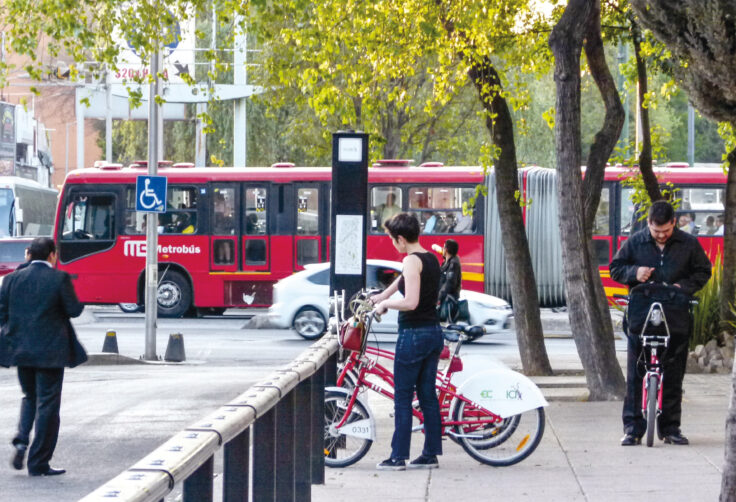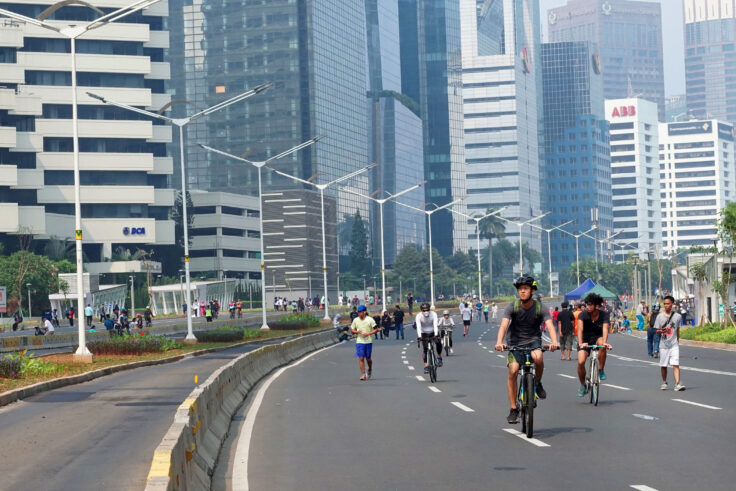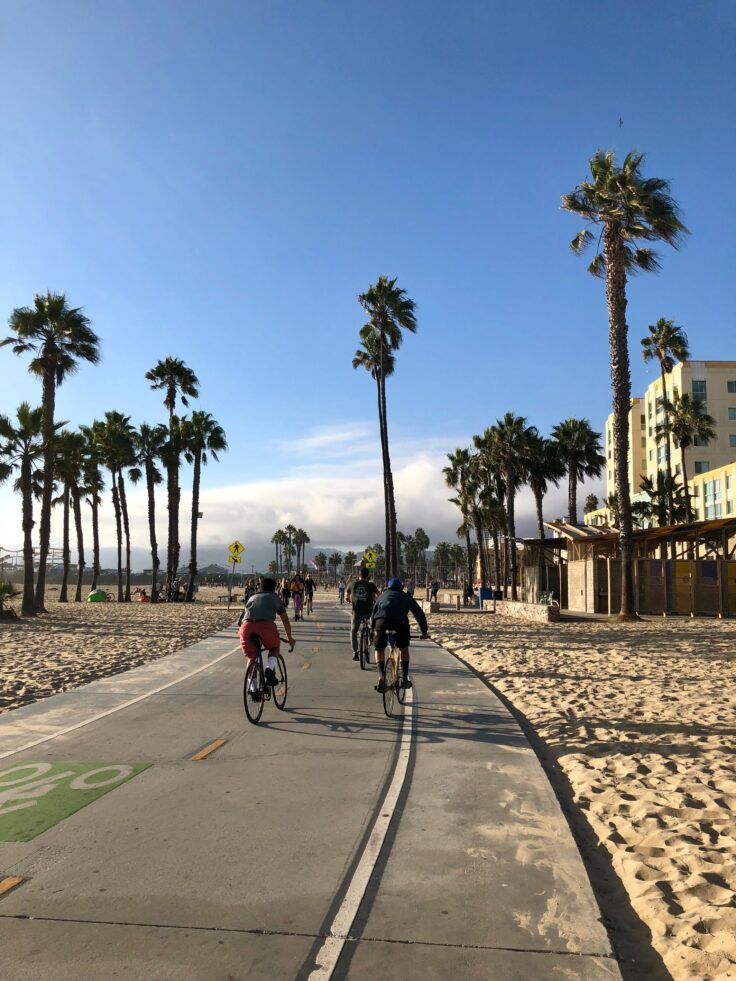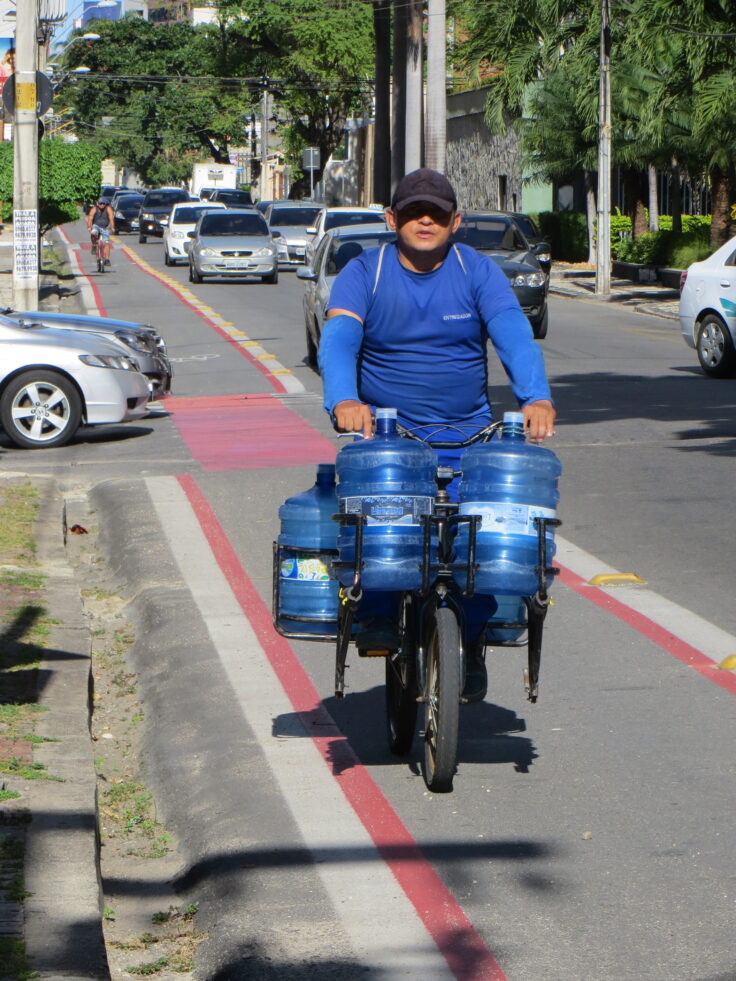March 01, 2023
The Eight Elements of a Cycling City
By Dana Yanocha and Verónica Ortiz Cisneros, ITDP Global
The United Nations Intergovernmental Panel on Climate Change has linked global temperature increases above 2°C to extreme climate disasters, and has recognized cycling growth as a critical pathway to avoiding this outcome. More people taking more trips by bicycle means fewer trips by car, which is critical to decarbonizing the transportation sector. Transport has the highest reliance on fossil fuels of any sector and accounts for 37% of carbon emissions from end-use sectors, according to the International Energy Agency. Beyond reduced emissions and pollution, people in cities that prioritize cycling see other significant benefits as well, ranging from expanded access and faster commutes, to better connections to public transit and improved health outcomes.
The COVID-19 pandemic underscored long-standing inequity and unsustainability in how we move around our cities. As more and more urban dwellers chose cycling as an essential mode of transportation, ITDP launched the Cycling Cities campaign to align advocates, governments, and NGOs around the opportunity to make cycling safer, more accessible, and more affordable in our cities. Cycling Cities brings together a cohort of cities and partners working to permanently redesign streets and adopt key policies to support cycling, so that 25 million more people live near safe cycle lanes by 2025. Based on this work, we have identified eight core elements for what makes a city a true ‘cycling city’, with examples of how these elements are being implemented in our Cycling Cities:

1. SAFE, DIRECT CYCLE LANES
Protected and connected cycle lanes are the foundation of a Cycling City, providing safe, direct routes for all types of cyclists. Bogotá, Colombia, in its 2020 plan, committed to adding 280 kilometers of cycle lanes to its existing 550-kilometer network, in addition to the 84 kilometers of temporary lanes created in response to the COVID-19 pandemic. These lanes supported a doubling of bicycle mode share from 4% to 8% in four years.
2. SAFE ROADS
Low vehicle volumes and speed limits make cycling on streets, especially without dedicated cycle lanes, safer and more comfortable. Kampala, Uganda’s Road Safety Strategy 2021-2030 aims to reduce traffic crashes and fatalities by creating separate facilities for different road users and reducing vehicle speeds with traffic calming interventions and lower speed limits.
3. GENDER BALANCE IN CYCLING
In most cities, women are underrepresented as cyclists. Cycling Cities recognize that women and men travel differently and work to minimize the physical and psychological barriers preventing women from everyday cycling. Mexico City, Mexico’s Gender and Mobility Plan 2019-2024 addresses women’s transport needs separately from those of men, and tackles issues such as harassment and gender inequality. Biciescuela offers a training course to teach adult women to ride bicycles, helping to address a gendered tradition of girls and women never learning to ride.

4. CHILD-FRIENDLY CYCLING
Cycling Cities promote family cycling by designing infrastructure that is safe enough for young children, and ensuring access to bicycles and learn-to-ride opportunities at a young age. Fortaleza, Brazil launched a bikeshare system for children called Mini Bicicletar in 2017. The eight-station system operates similarly to a typical bikeshare system, allowing adults to rent bicycles for children.
5. INTEGRATION WITH PUBLIC TRANSPORT
Cycling offers first-last mile connections with public transport, and expands the number of people within a reasonable distance of transit stations. Jakarta, Indonesia introduced a plan in 2019 to build 500 kilometers of cycle lanes that link to the public transit network. Currently, the city is working to make it easier for people to use bikeshare as a first-last mile solution, piloting new directional signage at transit stations, and improving connections between public transport and bikeshare stations.
6. DEDICATED FUNDING FOR CYCLING
Dedicating funding in municipal budgets ensures that infrastructure and supportive cycling programs are built and maintained over time. Pimpri-Chinchwad, India’s Non-Motorised Transport policy mandates that a minimum of 60% of transportation funding go to creating and maintaining walking and cycling infrastructure in the city. A portion of the funding for cycling comes from an Integrated Transport Fund and parking fees collected from motorized vehicles.
Dedicated cycle lanes in cities like Los Angeles, CA (left) and Fortaleza, Brazil (right) are key to promoting cycling as a reliable transport mode.


7. CAR-FREE DEMONSTRATIONS
Car Free Days, which restrict cars on certain roads or throughout the entire city for a day, enable people to experience streets with few or no cars, promoting the benefits of spaces that support safe cycling and walking. Guadalajara, Mexico began hosting weekly Car Free Sundays, spanning over 65 kilometers of city streets, in 2004. These public events attract hundreds of thousands of people walking and cycling.
8. BICYCLE RETAIL AND REPAIR SHOPS
Widespread bicycle retail and repair shops help people access different bicycles, accessories, and parts, as well as maintenance. They can also serve as hubs for the cycling community. In Los Angeles, California, USA, Community Bike Shops provide bicycles, classes, services, and social support to community residents. Many shops are in neighborhoods that cannot support for-profit bicycle retail shops and are frequently the only place for limited-income people to get repairs, maintenance, or learn to ride a bicycle.
As many people worldwide witnessed during the COVID-19 pandemic, cycling is one of the most resilient forms of transport during crises — it is nimble, flexible, and there for people when they need it. As cities work to achieve these Eight Elements of Cycling Cities, cycling will become a more convenient, affordable, and reliable transportation mode for more people. It is critical for cities to continue investing in programs and policies that support cycling, with the goal of becoming cycling cities.
